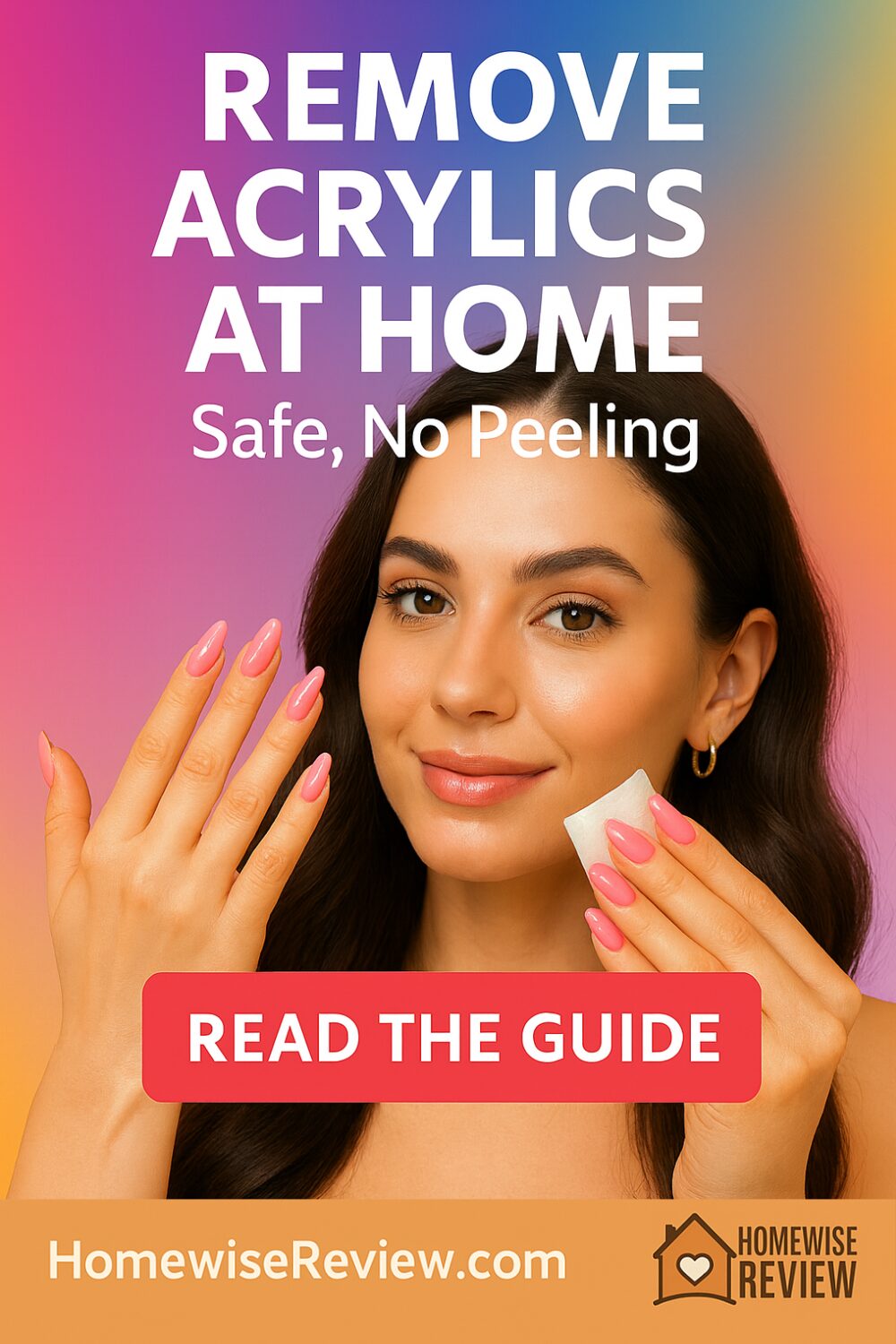
Removing acrylics at home does not have to wreck your nails. The trick is patience, the right tools, and letting acetone do the heavy lifting so you are never peeling or prying.
This guide walks you through three safe options: the classic foil-soak, a bowl soak for speed, and a no-acetone tidy-down if your nails are already fragile. You will also find a simple supply list, what not to do, and aftercare that helps your natural nails bounce back.
Quick safety notes
- Work in a ventilated room. Acetone is flammable, keep away from heat or sparks.
- Do not peel or force acrylic off. That rips layers from the natural nail.
- If you feel burning or see redness, stop and rinse with cool water.
What you’ll need
Acetone method
- 100% acetone
- Nail clippers and a coarse file
- Cuticle oil or olive oil
- Petroleum jelly
- 10 cotton pads or balls
- Foil squares or nail clips
- Orangewood stick or cuticle pusher
- Buffer, gentle hand cream
Non-acetone tidy-up
- Coarse and fine files, buffer
- Cuticle oil and hand cream
Method 1: Foil soak with acetone (least messy, very effective)
- Trim and thin
Clip off any length, then file the acrylic surface to break the topcoat shine. Avoid your natural nail edges. - Protect skin
Rub a thin ring of petroleum jelly around each nail to shield the skin from drying. - Soak wraps
Saturate a small cotton piece with acetone, place on the nail, and wrap snugly with foil or use nail clips. - Wait, then check
After the first interval, unwrap one nail and gently push the softened acrylic with an orangewood stick. Do not force. Re-wrap if it’s still firm. - Re-soak as needed
Acrylic often comes off in layers. Add a fresh acetone pad and re-wrap until the product slides away with light pressure. - Buff and hydrate
Lightly buff remaining residue, then wash hands and drench nails and cuticles with oil and a rich hand cream.
Tips
- Keep cotton small so acetone contacts the acrylic, not the surrounding skin.
- If you hit your natural nail, stop pushing and re-soak.
Method 2: Bowl soak with acetone (faster but drier)
- File off the topcoat shine.
- Apply petroleum jelly around nails.
- Pour a small amount of warmed (hand-warm, not hot) acetone into a glass bowl.
- Soak fingertips and gently scrape softened acrylic every few minutes with an orangewood stick.
- Rinse, buff, oil and moisturise.
Tip: Floating the acetone bowl inside a larger bowl of warm water helps it work better without heating the acetone directly.
Method 3: No-acetone tidy-down and grow-out (gentlest)
If you cannot use acetone:
- Clip to very short length.
- File the surface thin, taking frequent breaks.
- Smooth with a buffer.
- Seal edges with cuticle oil twice daily and hand cream.
- Repeat gentle filing every few days as it grows out.
This is slow but safest for damaged nails.
What not to do
- Do not pry with metal tools or credit cards.
- Do not use dental floss under the acrylic unless it’s already lifting and you can glide with zero force.
- Do not use heat on acetone.
- Do not sand the natural nail plate thin.
Aftercare for happy nails
- Oil cuticles twice a day for a week.
- Wear gloves for washing up and cleaning.
- Leave nails bare for several days, then use a strengthening base coat only if you are not peeling.
- File only in one direction to avoid splits.
FAQs
Can I use regular nail polish remover
If it’s not 100% acetone, it will be very slow. It works only for light overlays and will need lots of filing first.
My nails look white and chalky after
That’s dehydration from acetone. Oil, moisturise, and they’ll rebound. A gentle buffer can remove the chalky look.
There’s a thin layer left that won’t budge
Do a short re-soak or gently buff. Don’t scrape hard on the natural nail.
When should I see a pro
If you have green spots, pain, or the acrylic is lifting near the cuticle with redness. A tech can remove it safely without stressing the nail plate.
See Also:
If you like clear, no-nonsense care tips, you’ll love our myth-busting deep dive in Top 10 Skincare Myths Debunked and the handy Ingredient Decoder for Everyday Products to spot what’s actually in your remover, oils, and hand creams. To keep your kit fresh, bookmark Makeup Shelf-Life and Storage so you know what to keep, chill, or toss.
Planning your routine for colder weather Check How to Adjust Your Makeup in Winter for formulas and finishes that won’t crack on dry hands or cuticles. And if you’re shopping for new removers or nail care, Why Beauty Products Get Returned can help you avoid common misses before you buy.




